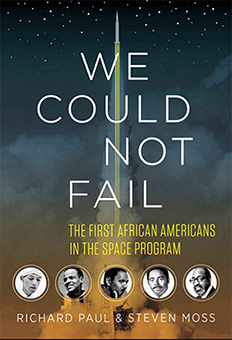 Amy Foster is an associate professor of history at the University of Central Florida and holds the PhD in history from Auburn University.. A historian of technology and gender, she is the author of Integrating Women into the Astronaut Corps: Politics and Logistics at NASA, 1972–2004 ( Johns Hopkins University Press, 2011). Her research interests include the U.S. space program, gender and the space program, gender issues in engineering, aviation history, and the history of technology. She has been the recipient of the Guggenheim Fellow at the Smithsonian's National Air & Space Museum and held a fellowship sponsored jointly by NASA and the American Historical Association.
Amy Foster is an associate professor of history at the University of Central Florida and holds the PhD in history from Auburn University.. A historian of technology and gender, she is the author of Integrating Women into the Astronaut Corps: Politics and Logistics at NASA, 1972–2004 ( Johns Hopkins University Press, 2011). Her research interests include the U.S. space program, gender and the space program, gender issues in engineering, aviation history, and the history of technology. She has been the recipient of the Guggenheim Fellow at the Smithsonian's National Air & Space Museum and held a fellowship sponsored jointly by NASA and the American Historical Association.
Paul, Richard, and Steven Moss
We Could Not Fail: The First African Americans in the Space Program
University of Texas Press
274 pgs., 978-0-292-77249-6, hardcover, $30.00
May 1, 2015
Reviewed by Amy Foster, PhD
President Eisenhower signed the executive order creating the National Aeronautics and Space Administration (NASA) in 1958. For the past six decades, that agency has pushed the limits of human presence in space. But the image of NASA’s white, male, pocket protector–toting engineers and technicians who put America’s astronauts into space—the image that we know so well from Tom Wolfe’s iconic book The Right Stuff—misses an important cadre of NASA employees. Finally there is a book to rectify that oversimplified image.
In We Could Not Fail, Richard Paul and Steven Moss tell the story of the African American men who worked for NASA in the 1960s, breaking racial barriers not just in one of the most elite organizations in America, but also in the American South during the height of the Civil Rights era.
We Could Not Fail is not an encyclopedia of every black worker in the space program. Instead the authors focus on the stories of ten men who worked at NASA directly or for one of its contractors. But this also is not a book that simply narrates the lives of ten men. This book’s strength rests in the interlacing of these personal narratives within a larger historical discussion of the Civil Rights era. In fact, Paul and Moss argue that the history of African Americans in the space program can provide insight into NASA’s role in fighting for civil rights. NASA’s major facilities in Houston, Huntsville, Alabama, and Central Florida were all located in the hotbed of racial violence during the 1960s. Paul and Moss note that Lyndon Johnson, the chairman of the National Space Council and later president of the United States, “set out to make the South a different kind of place” through the infusion of federal money into the region that would—as a side benefit—ease racial tension (224). By weaving the stories of these ten men alongside the historical narrative of the Civil Right movement, Paul and Moss provide a new understanding and appreciation of NASA’s larger contribution to the history of the United States made possible by the contributions and sacrifices of its people.
As with any quality historical monograph, We Could Not Fail maintains the standards of the discipline, building on hours of oral interviews with the historical actors as well as thorough archival work and a solid grounding in the secondary literature by other scholars on the history of NASA and the history of the civil rights movement. While this book should have a valued place in the college classroom, it remains one that is equally accessible to a general audience, thanks in large part to the quality storytelling.
Paul and Moss have revived the stories of African Americans in the space program with this book. At the same time, they have uncovered a connection between those men and their place in American history they probably did not even know they had. The authors should be commended for such an accomplishment.
* * * * *


